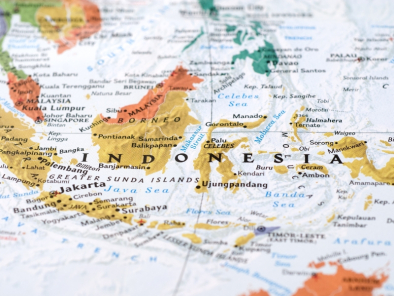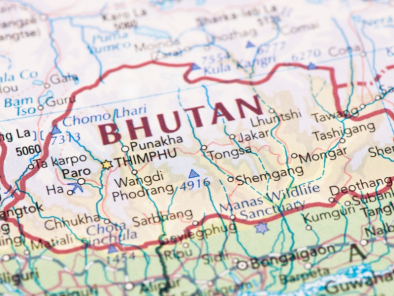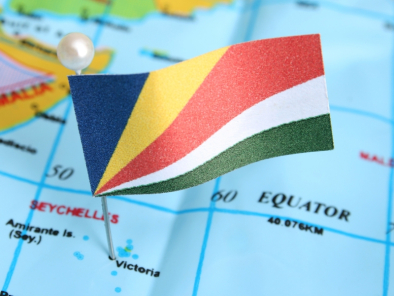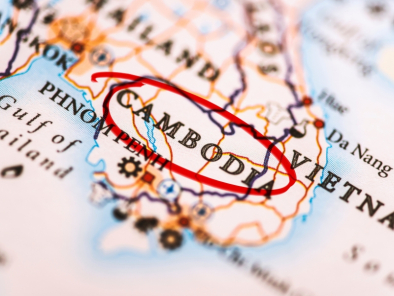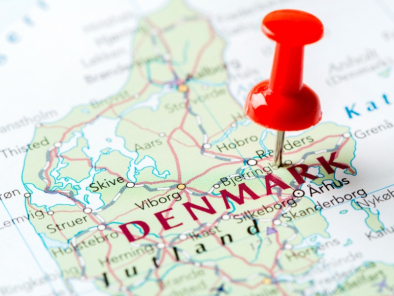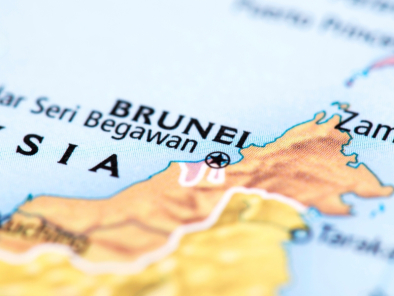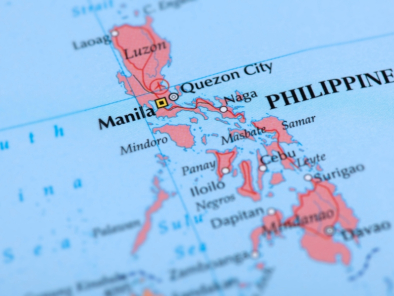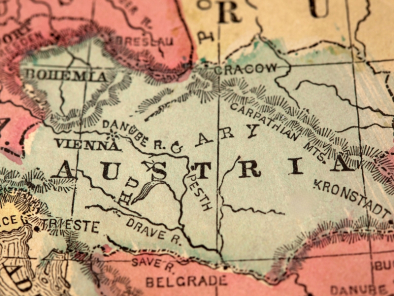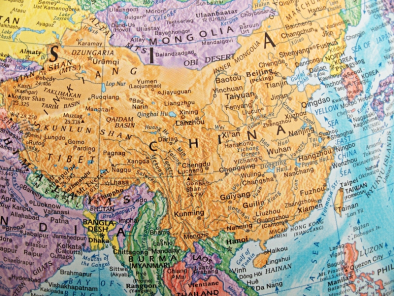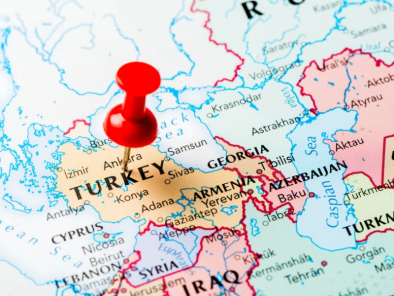
Posted by: Leo travel Hub
It's
also a great country to visit. The Turks are mostly overwhelmingly friendly to
foreign visitors, the cuisine is excellent, the cities are dotted with majestic
old buildings, and the countryside is often worth a good old-fashioned gasp. There
is an enormous variety of things to see and do ranging from water sports to
mountain trekking, archaeology to night clubbing and river rafting to raki
drinking. Whether you leave
VISA The visa is to be obtained prior to arrival in the country
GETTING THERE:
Turkish Airways (TK)
fly directly into
Airlines like
Emirates, Gulf Air, Qatar Airways etc fly into
Internationatl
Airports in
Other
International Airports in
Turkish
airlines link all major cities, including the busy Istanbul-Ankara corridor. B
Buses go everywhere in
Trains have a hard time
competing with long-distance buses for speed and comfort, but the sleeping-car
trains linking
Private dolmuses
(shared taxis)
are a good option for short trips. Car ferries can save you days of driving and
offer the opportunity to take a mini-cruise along the Turkish coasts.
Ferries operate from Istanbul to Izmir, from Istanbul to Trabzon (June to
September only) and there's a hydrofoil from
Private
ferries run between
CLIMATE:
Although
Turkey is situated in Mediterranean area where climatic conditions are quite temperate,
diverse nature of the landscape, and the existence in particular of the mountains
that run parallel to the coasts, result in significant differences in climatic
conditions from one region to the other.
Spring (April to
June) and autumn (September to November) are the best times to visit. The climate is
perfect on the Aegean and Mediterranean coasts then, as well as in
While the coastal areas enjoy milder
climates, the inland Anatolian plateau experiences extremes of hot summers and
cold winters with limited rainfall.
The Aegean and
The Black Sea coast receives the greatest amount of rainfall and is the only
region of
CURRENCY:
The
currency for
Exchange slips: The exchange slips for the conversion of foreign currency into Turkish
lira
should be kept, since you may be required to show these when reconverting your
Turkish lira back into foreign currency, and when taking souvenirs out of the
country (to prove that they have been purchased with legally exchanged foreign
currency)
Credit cards: Visa, MasterCard, American Express, Eurocard and Diners Club are
accepted at most major international establishments such as hotels and upmarket
restaurants. Be careful how and where you use your credit card in bazaars and
markets. Eurocheques and traveller's cheques can be cashed immediately. You
will need proof of identity. Currency and Traveller's Cheques can also be
exchanged at post offices, exchange offices and some banks.
Credit
or debit cards can be used to withdraw cash from ATM machines, which can be
found in all tourism centres.
Banks are generally open from 08h30-12h00/12h30 and from 13h30-17h00 Mon-Fri, depending on the bank. Banks close on Saturday and Sunday.
INTERNATIONAL
DIALING CODE:+
90
GETTING AROUND:
Air: There are several low cost airlines available within the country.
Train:
Bus: Both long & short distance services are available within the country
and internationally.
Ferries: Catamarans
connect
ELECTRICITY:
The
electrical current is 220 Volts, AC 50 Hz
No
visit to
At
various times in its history
A
hard day's sightseeing can be rounded off dining, dancing, and drinking into
the morning. If it all gets too much you can always take a relaxing boat trip
up the Bosphorus or escape to the nearby Princes islands. Visit in June and you
will find the city in the middle of its cultural festival, the envy of the
world.
For
many centuries the capital of the civilized world,
For those who want to range further, you can't get much further away
(ideologically and culturally) than the Asian part of the city, just across the
mile wide Bosphorus. Take the
trip across and you can immediately feel the contrast.
Meanwhile, back in
History notwithstanding,
Sultanahmet, in the old city,
is the best place to look for a bottom-end or middle-range hotel.
GETTING AROUND IN
The
only scheduled transport direct from the airport are the private Havas buses,
which run every hour from 05h00-23h00, stopping at Aksaray,
the nearest stop to the tourist centres of Sultanahmet and Taksim square
Taxis: from the airport
to the centre cost around TRY20-25 but watch the meter and make sure that no
hidden "extras" are added on. For night journeys the tariff is higher
at TRY50. Depending on the traffic, length of journey can range from 25 minutes
to one hour.
With such a
confusing transport system most visitors opt to use taxis when walking is not
an option. Taxis are omnipresent, yellow, clearly marked and should use a
meter. Beware that with the chronic traffic problems, at peak times you might
end up stuck in a jam and actually be quicker (and richer) by walking. Also
make sure you keep an eye on the meter at all times - a few words of
explanation follow.
After midnight taxis are 50% more expensive
than they are through the day. "Gündüz" is the daytime rate while
"Gece", is the higher rate charged between 00h00-06h00. Make sure
you're paying the correct rate, as a favoured trick of unscrupulous drivers is
to switch to the night rate surreptitiously. The meter should display on it
somewhere which rate is currently being applied.
Tramway: Istanbul boasts
one fast tramway line which runs from the Eminönü
ferry terminal through Sultanahmet Sq, to Aksaray, where you can change to the
metro, and out to the suburbs along the Maramara coast. Tickets cost just TRY1,
any distance. A separate "historic" tramway runs the length
of the pedestrianised
Metro:
One
line runs from Aksaray via the
main inter-city bus station at Esenler
to the western suburbs and the airport. A separate line runs between Beyoglu's Taksim Sq and the northern suburbs,
and is in the process of being extended. All tickets TRY1, on sale at the
stations.
Buses: The bus system
is comprehensive but, for the outsider, nigh on impossible to fathom on short
acquaintance. Main hubs for buses are adjacent to the ferry terminal at
Eminönü, and at Beyoglu's Taksim Sq.
For visitors the most useful service is the number 14
which runs a circular route connecting Sultanahmet Sq with the fish restaurant
district of Kumkapi and Taksim Sq in Beyoglu.
If you are catching a bus be prepared for a bit of a squeeze, public transport
seems very popular in
For public buses you must purchase tickets in advance from a
ticket booth or newspaper kiosk. On privately operated buses you buy the ticket
on board.
Trains![]() :
:
The European line, which commences at Eminönü, is particularly pleasant, running
under the ramparts of
Ferries![]() : Ferries operated by TDI, the state
ferry operator, leave from several terminals of which the most useful for
visitors is Eminönü. From here ferries depart every 20-30 mins to Kadiköy
and Üsküdar on the Asian shore, and nearly a
dozen times a day to the
: Ferries operated by TDI, the state
ferry operator, leave from several terminals of which the most useful for
visitors is Eminönü. From here ferries depart every 20-30 mins to Kadiköy
and Üsküdar on the Asian shore, and nearly a
dozen times a day to the
Special Bosphorus tour ferries run twice a day in summer, and once a day at
weekends in winter. Seabuses - fast, modern hydrofoils - operate between
several points around the city. The routes between Kabatas and the
Main Areas:
-
-
Attractions:
-
Blue Mosque: Mosque of 6 minarets.
-
Hagia Sofia : the Church of the Divine Wisdom , now converted into a Museum
-
İstanbul Archaeological Museum.
-
-
Turkish & Islamic
-
-
Grand Bazar with 4000 shops .
-
Bosphorus Cruise.
Blue Mosque:
The
Blue Mosque is a triumph of
harmony, proportion and elegance: its exterior elicits the sort of
eye-boggling, weak-kneed admiration which Aya Sofya's interior induces.
Blue Mosque, Sultan
Ahmet Camii
is one of the most beautiful mosques in the world.
Its name is derived from the blue tiles decorating its interior. Completed in
1616by Mehmet Aga, Imperial
Architect and one of the students of the great architect Sinan.
Its grace and beautiful proportions were intended to reflect the splendour of
Islam.
It was the supreme Imperial Mosque of the
Iznik tiles on the walls are bathed in glorious light that is filtered through
260 windows.
In summer evenings there are light and sound shows in the grounds.
Its
sheer size and location in Sultanahmet Square
make it one of the most visited of the city's attractions. From the exterior
the mosque's main feature is the unique series of six minarets
while the interior is decorated with twenty thousand blue patterned tiles -
from where the mosque takes its English name. The whole thing was built between
1609 and 1616 for the Sultan Ahmet, with his tomb lying near to this
enduring memorial.
Open from sunrise to late evening
Aya Sofya(
The
Church of the Divine Wisdom, the greatest church in Christianity. The
interior's immense dome is still impressive, though the church was sacked by
the Latins and many of its treasures taken to the west. When Constantinople (
The
Byzantine cathedral
of Aya Sofya
is arguably the most awe-inspiring sight in
The
whole interior was originally bedecked with fabulous mosaics
and frescoes - some of which still survive today.
However, the most impressive feature is the immense dome,
in its time the largest ever constructed, a record it held for 1000 years. The
building was converted into a museum in the early 20th century and visitors can
still see the dizzying Byzantine columns. Ongoing restoration work is
uncovering more and more of the ornate mosaics and masonry that went into the
original construction.
Located
at the Eastern side of
The
Built
in the late 15th century,
Arranged around three courtyards the palace rooms now house displays ranging
from the fifth largest diamond in the world through the furniture and finery of the Sultan's private rooms to the former utensils
of the palace kitchens. Of particular interest is the Harem,
which comprises a frankly staggering 400 rooms and was home to the Sultan's
many wives.
Although visitors are now welcome to tour this most sacred of inner sanctums,
when they were in use only eunuchs were allowed to
enter the apartments unblindfolded. Allow at least half a day to do the place
justice, and go early if you want a place on a tour of the Harem.
Open: Wed-Mon 09h30-19h30
Archaeological Museum
Not
the best presented collection in the world but
The range of exhibits includes artifacts from the great Empires that held sway
in the region over the centuries, most notably the Romans
and Persians. Among the items on display is a
fabulous collection of jewellery found at
Located at the
Yerebatan Sarayi - The
An
eerie subterranean "sunken
palace"
of 336 marble columns, which could hold 80,000 cubic feet of water in case of
drought or siege.
This
6th-century Byzantine underground water cistern is rather
special, having been constructed using hundreds of Greek and Roman columns
to support the 20m high brick vaulted ceiling.
Measuring 140m by 70m, there's no hint in the busy road junction above that it
even exists. Once inside you are free to wander the raised walkways through the
forest of columns. Subtle lighting and piped classical music complete
the atmospherics and give the ancient feat of engineering a suitably mystical
ambience.
Clearly signposted on the north side of
Grand Bazaar:
You
don't have to want to buy a carpet to visit the Grand Bazaar (or Kapali Çarsi). This vibrant
and eclectic mixture of stalls and shops sells just about everything and
anything.
One of the world's oldest shopping malls, it was begun in
the late 15th century, extended in the 16th, and by the late 18th century had
reached labyrinthine proportions. By this time, it housed four and a half
thousand shops and over two thousand workshops - pretty much, what you will see
today. It is not just aimed at tourists; you will find plenty of Turks there
shopping for various items, including clothing, leather goods, and gold.
Located at Cemberlitas tram stop. Open: 08h00-20h00.
Bosphorus Cruise:
Bosphorus is the name of
the strait, which lies between Europe and
For
anyone visiting
In summer, two cruises a day leave from the Eminönü ferry terminal and two boats
return in the afternoon from the last stop at Anadolu Kavagi. Ferries up the
Bosphorus depart from Eminönü, from the "Boazici" terminal. Out of
season services drop off to one day, a week only (either Sat or Sun).
Times of services vary, but the first departure of the day is not usually
before 10h00, and the second not usually before 13h00. Return services are
generally 15h00 and 17h00. Service times are clearly posted at terminals.
Private charters can also be made.
Built
in 1348 and originally known as the
With the Ottoman conquest in the 15th century, Galata became the westernmost
end of the "Silk Road" from
Open: daily 09h30-17h00
The Land Walls & Yediküle Fortress:
Stretching
in a long arc from Yediküle on the Sea of
Marmara to the Golden Horn,
Built in the early 5th century, they are still one of the most impressive
sights in the city. If you don't feel up to walking the full 7km, Yediküle Fortress,
at the Marmara end of the walls offers good views along half the length of the
ancient fortifications.
Yediküle train station, bus 80, 80T from Eminönü. Open: daily 24 hours
The Kariye Mosque (
Unless
you are walking the city walls, which pass close by, you are probably best off
visiting the Kariye by taxi (Ask for "Kariyer Jarmee").
However you get here though, it is definitely worth the journey as this beautiful
12th-century church contains the best examples of Byzantine mosaics
and frescoes anywhere in the city. The majority
of them depict the life and works of Christ, with the most spectacular showing
him crushing the gates of Hell underfoot at the resurrection. The church was
used as a mosque in the 15th century, which meant covering all the mosaics.
They were uncovered again when the building was converted into a museum.
Kariya Bostana Sok. Open: daily 09h00-19h30 (except Wed).
Its
construction began in 1846 in the
The
palace is comprised of a main unit, Heir Section, Furniture and Guards' Room,
While the gardens are arranged in four sections, the main building comprises of
three sections, namely the State Office (Mabeyn-i Hümayun), Auction Hall and
Private Office. The main front of the palace overlooking the sea, Private
Office is a two-storey building. Süfera (envoy) Saloon on the upper floor of
the palace is one of its most impressive sections. Auction Hall rises between
the State and Private Offices as a monumental structure. It is built on a
square-like surface, covered with a dome from the inside and a roof from the outside.
It is adorned with rich decorations.
The Private Office is made up of Sultan's Office and harem. Harem is a plain section with grand common-use places and closed private rooms.
Hippodrome (
Sultanahmet Square, or the Hippodrome, was commissioned
by Roman Emperor Septimius Severius at the end of 2nd century. Hippodrome was
later hugely extended by Great Constantin.
In the long, east side of this U-shaped hippodrome, there used to be an emperor lodge in the balcony where there were 4 bronze horses. In the center, there used to be a shallow wall which divides the sand covered hippodrome field into two, around which cars raced, and over this wall there used to be monuments brought from many parts of the empire and statues of horses.
Suleiman's
Mosque:
The Suleiman's Mosque (Suleymaniye in Turkish and Arabic) is the second largest but finest and most magnificent of the imperial mosque complexes in the city.
The Golden Horn has a long, horn-like shape
separates the European part of
The skirts of the hill are covered with cemeteries, which are partly shadowed by dark cypress trees. Pierre Loti Tea Garden, which is located on the hill overlooking this side, is a magnificent place to enjoy the view.
HOTELS IN
Establishments range from the hostels of the
backpackers to international standard modern complexes.
Somewhere in the middle, you will find the pansiyons
and smaller family run hotels that are more idiomatic and characteristic of the
city's eclectic cultural mix. The streets around
For more upmarket accommodation or something truly original head towards the
historic quarter of Pera. Here you
will find the über trendy Lush Hip hotel,
which provides stylish individually furnished rooms with a high level of
comfort. As you would expect the hotel, restaurant and bar are equally
desirable with a great menu and cocktail list.
Also within the historic quarter is the Barcelo Saray a modern hotel providing
contemporary styled rooms and great on-site facilities including a spa, restaurant,
and bar. The location is also perfect for exploring the city on foot with many
of the main attractions such as the Grand Bazaar close by.
For something a bit less frenetic head out of the city proper to the seafront.
Cooler in summer and with views across the waters and to the
Most visitors head straight for Hisar, the Byzantine citadel atop the
hill east of the old city, and the nearby Museum
of Anatolian Civilizations. Just south is Atatürk's Mausoleum, a monumental building, spare, but beautiful,
that echoes the architecture of several great Anatolian empires
The
Presidential Mansion
is
preserved as Atatürk used it, with decor and furnishings of the 1930s including
billiard table and cigar-and-brandy nook. There is a lot of ancient history
around too. Roman Ankara was a city of
some importance, and Roman ruins are dotted in amongst the mosques and
monuments of Muslim Anatolia. Most of the cheaper hotels and restaurants are in
old
A
busy fishing port
Founded
in the 8th century BC by settlers from
An
important Greek and Roman city
before becoming the first capital of the Ottoman Empire,
The
city also boasts an excellent
Replete with attractions left over from the days of Empire, in the city can be
seen mausoleums of early Ottoman
emperors and several fabulous mosques
that rival
Tourists
mainly come here for the excellent skiing
on
Travel
by ferry to Yalova, then by road to Bursa- Bazaar and Kaza Hani, the silk cocoon caravanserai, then travel by cable car
to visit Mt Uludag…looking out to
THE
TURKISH
Often
called the Turkish Riviera, the Aegean
coast between Bodrum and Kas is home to most of
Bodrum has its
Crusader castle and some Roman ruins. It also boasts the most extensive
nightlife on the coast including the world's largest floating disco, which sets
sail when the on-shore clubs close at 04h00.
To the south Fethiye, Dalyan, Patara, and Kas all offer a good mix of ancient sites, sandy beaches and busy nightlife.
Lies in
It is also a great base for visiting the region's many well-preserved
ancient cities such as Telmessos, Perge,
and Aspendos.
Also popular is nearby
Side,
75km east of
Ancient
city of
Aspendus is located in the
ancient region of Pamphylia. The name Aspendus
is of Anatolian origin. The Greek colonies arrived here around 13th Century
BC and took over an existing settlement. Alexander the Great claimed the city
from the Persians and during the Roman period as it was an important port city.
The
city was founded on a hilltop and spread down to the plains. Aspendus has one
of the
best preserved and largest Roman theaters in
THE
DARDANELLES -
Separating
Europe and
On
the south side lies the modern city of
15km south of Çanakkale
lies
To
the south stand the remains of ancient
KUSADASI:
Kusadasi,
which means "bird island", is set in a superb gulf in the Aegean
region of
The
reason why people flock here is the nearby ruins, some of the best preserved in
the whole of
Of
Nearby
Selçuk boasts a huge Byzantine fortress and basilica, but
the piece de resistance are the shattered ruins
of
Legend
has it that the Virgin Mary herself visited the city in around 40AD, whereas
the Temple of Artemis here was among
the Seven Wonders of the Ancient World, is truly, awe-inspiring. It is also the
site of one of the Seven Churches of
Revelation.
PAMMUKKALE:
Pamukkale - archaeological site and is Unesco World Heritage.
The
natural hot spring of Pamukkale -
near the southern city of
Calcium
carbonate deposited by the waters over millennia has created a beautiful
fairytale castle of soft white stone. The believed therapeutic powers of the
water were enough to encourage the founding of the adjacent ancient city of
Also known as ‘
One can take a dip in one of the thermal pools
here.
The
spring water at Pamukkale has therapeutic qualities and since antiquity has
been said to
cure rheumatism, kidney and heart diseases.
Just
one of
There
is a museum to the sect's founder Mevlana,
and the city also boasts a number of fine mosques built by the Selçuks - the first Muslim invaders of
Cappadocia is a high
plateau in
Inside these cone peaks, lie rock cut caves,
churches and underground cities with ancient Byzantine fresco paintings.
In
later periods, rain and wind eroded the land and created unusual valleys, canyons,
and cones.
For many centuries Hittites, Assyrian Colonies, Greeks, and Romans lived in the
region.
The
town of
One of the best ways to see this surreal landscape is by a Hot Air Balloon. Though a bit expensive, you will not regret it as
you float over the strange pink-hued peaks, the otherworldly shapes spiraling
up towards you. Balloons depart daily at sunrise for 45-minute or
one-and-a-half-hour flights. Make sure you leave yourself enough time for a
drink here: the soft volcanic soil in the area is ideal for growing grapes and
the region produces some of
Nine
small islands on the Sea of Marmara,
12km southeast of
Also
known as, the Prince Islands or Scarlet
Islands can be classified into three groups. Islands open to tourism, having residence, private-property islands, and islands which have no residence. Kınalıada, Burgazada, Heybeliada, Büyükada
and Sedef Adası are islands which are open to tourism and have residence. Kaşık Island and Pide Island are
private properties. Therefore, it is not possible to visit them. Yassıada, Sivriada and Balıkçı Islands
have no residence on them.
The
Since
the days of the Byzantine Empire, the
There are no motor vehicles so if you do not fancy walking you will have to
rent a bike from the numerous rental shops or hire one of the horse drawn
faetons. Largest of the three main islands is Büyükada, which boasts a Greek
monastery on top of its central hill. The radical political exile Trotsky
is just one of several famous figures that lived here and you can visit the
house the Russian revolutionary inhabited through the 1930s. Smaller islands Heybeliada and Burgazada are also worth
visiting.
Hourly ferries leave from Eminönü
from the "Adalar" Terminal
and take around two hours to reach the first island. Three hydrofoils a day
leave from Kabatas and take around
half an hour. Ferries between the islands take around ten minutes each.
Heirapolis
means sacred-city and its history goes back 6th
of
largest in
The
history of the city starts in the 8th
area. The city was found on a hill overlooking the Caicos plain. It became one of
the cultural
and intellectual centers of the day. With the invention of Pergamena (parchment),
its library grew to rival in size, the great library of
COMMAGENE
KINGDOM AT MT. NEMRUT:
One
of the most spectacular sites in
is an extension of the Taurus mountain
range in southeastern
VAN:
The
city of
The
region is steeped in history and was once the centre of a forgotten culture.
The Urartians' short-lived Empire stretched from Eastern Turkey into
Of
the numerous ruined churches in the area, the most beautiful is Akdamar, which sits on a tiny island in
the lake and is covered with intricate relief carvings.
MT
ARARAT:
A highlight of the trip to eastern turkey, the twin peak of Mt Ararat are supposed to be the resting place of Noah’s Ark. Permit and guide are mandatory and apply 45days in advance. Best months for climbing are July- Sept.
EVENTS:
The
dates for Muslim religious festivals are celebrated according to a lunar
calendar; the dates are locked in every few years by Muslim authorities. Only
two religious holidays are public holidays: Seker Bayrami, a 3-day festival at the end of
Ramazan (30 days in December-January), and Kurban Bayrami (March-April) which commemorates
Abraham's near-sacrifice of Isaac on Mt Moriah. In commemoration of God
permitting Abraham to sacrifice a ram instead of his son, every Turkish
household who can afford a sheep buys one, takes it home and slits its throat
right after the early morning prayers on the actual day of Bayram. Family and
friends immediately cook up a feast. You must plan for Kurban Bayrami: most
banks close for a full week, transportation will be packed and hotel rooms will
be scarce and expensive.
Secular
festivities include Camel-Wrestling in mid-January,
in the
SHOPPING:
Hand-made carpets and kilims are a traditional Turkish handicraft
and are on sale everywhere. There is no secret to buying one, just decide how
much you're prepared to pay, shop around to see what's available and bargain furiously. Prices will vary
according to size, age, condition and quality. Remember that it's illegal to
take antique carpets out of the country. Quality, to a large extent is a
question of taste. The best pieces combine a balanced design with tastefully
muted colours. Ultimately you'll have to live with it so choose well.
Jewellery is a speciality
with the best pieces traditionally made by Armenian craftsmen. Intricate wristbands and bracelets made from woven
silver thread, and necklaces of jet, turquoise and amber are common. Turkish
gold jewellery tends to be a bit fiddly for Western tastes, although there is
no shortage of workshops where you can have your own designs made up. Either
way, items are sold by weight.
Traditional
tinned copper kitchenware has recently become popular for its decorative
potential. Used pieces are sold by weight and can be picked up for a few
dollars or less, and can be taken to a nearby tinsmith for re-tinning. More
expensive, shiny, polished specimens are often lacquered and so unsuitable for
cooking
Many
Western high street chains source their products in
Turkish olive
oil, olives and cheese are all excellent, and very reasonably priced. In
the olive growing west of the country look out for the producer's co-op stores,
and roadside stalls where prices are generally at their lowest.
Note:
Turkish duty-free shops must be among the most expensive in
Shopping
in the city is divided into a few main areas, all of which are worth exploring
to gain the full flavour of
The 400-year-old Grand Bazaar (Kapali
Çarsi) is the best place to get an idea of the varied carpets, leather goods, smaller antiques and all manner of
"ethnic" souvenirs on offer, from pointed toe slippers to lacquered boxes. When buying carpets you
are expected to bargain hard, while for less expensive items it's best to shop
around and get an idea of prices before making a purchase. If you do offer
a price for most goods at the Grand Bazaar make sure it’s 30% of the actual
price. This will put you into a good position to negotiate a realistic price.
When haggling it is always useful to confirm
the currency in which you will be trading in,
The 1km long pedestrianised main street of Istiklal Caddesi Beyoglu is
home to innumerable clothing shops ranging from expensive luxury stores like Vakko at 123-5 to the market stalls in the Terkoz Cikmaz alley, which sell seconds
of Western branded goods for a few dollars or less.
Nisantasi is a middle-class district to the north of the centre and the place to head for serious clothes shopping. Most big Turkish and
Western brands can be found here - some like DKNY and Armani even have
their own stores. Further up the metro line in Levent, is the city's most
up-market shopping mall, "Akmerkez" where big Turkish
clothing brands like Beymen have
their flagship stores. Get there by the Taksim-Levent metro line, alighting at Osmanbey.
Going the otherway of the metro line the shopping
district of Lalleli offers a
good range of casual clothes. For a more humble shopping experience a trip to Aksaray will throw up some very cheap
souvenirs to bring back. Goods are usually paraded on the pavements and there
are very few tourists to be seen, therefore prices tend to be more realistic.
The street traders only operate in the late evening.
Eminönü, the area downhill
from Sultanahmet on the
Shops and bazaars
are usually open Mon-Sat from 09h30-13h00 and from 14h00-19h00. In resort
areas, shops may stay open until 24h00. Shops usually close all day on Sunday.
Value-added
tax is nearly always included in quoted prices. When
returning from
There are four lists of goods and five different VAT rates:
- List 1 (dried grape, dried fig, cotton, wheat, barley, etc), VAT rate: 1%
- List 2 (Basic food products), VAT rate: 8%
- List 3 (Luxury consumption products), VAT rate: 23%
- List 4 (luxury cars), VAT rate: 40%
Any other goods and services not in List 1,2,3 or 4, VAT rate: 15%
Most countries
offering a tax refund specify a minimum amount that must be spent in a
particular shop to claim a refund. In
Alternatively, you
can purchase goods from shops participating in the Tax-free Shopping programme (look
out for the Tax-free Shopping logo displayed in the window). Simply show your
passport when you make a purchase and you will be given a Tax-free Shopping
Cheque to the refund you are owed. As you leave the country, customs officials
will stamp your cheques. You can claim your refund from the Tax-free Shopping
desk or have the refund sent to you.
FOOD:
Turkish
eateries fall into several broad categories: The Lokanta is usually a homely restaurant specializing
in meat and vegetable dishes cooked in rich tomato sauces, many derived from
dishes cooked in the Ottoman palace. The Meyhane mixes
restaurant with bar and is a traditional stop off for an evening's drinking
often accompanied by starters (meze),
with a huge plate of sizzling kebabs to follow. Similar to the Meyhane is the fish restaurant
where plates of meze and glasses of raki are followed by grilled catch of the
day.
There is no shortage of good places to choose from, and most are close to the
main tourist centre of
Sultanahmet.
Here you will find just about everything from standard international fare
through traditional Turkish food to authentic Indian cuisine. The nearby
fishing "village" of Kumkapi is a good place to head for local seafood.
A taxi ride over the
The restaurants along Sultanahmet's Divan Yolu are the most obvious places to eat, but you will be doing your money belt a favour if you head out of the tourist zone for a meal. There are many little places in the Grand Bazaar where you can sit and fill up slowly on a procession of small dishes. Istiklal Caddesi is also full of small grill joints - the nicest are probably up the side streets to the south.
NIGHTLIFE:
Perhaps
surprisingly
Despite the predominantly Muslim religion, alcohol is widely available or you
can head for a more traditional establishment where locals drink strong Turkish
coffee and chain-smoke cigarettes.
Although usually the first you come across in the city, bars around Sultanahmet can be rather sad affairs
with no regular clientele. Most locals and an increasing number of tourists now
head for Beyoglu (the former European
Quarter) where the backstreets around Istiklal
Street are home to a thousand cafés and bars.
Other interesting venues can be found on the stretch of the Bosphorus between Ortaköy and Arnavutköy,
where many of
Watch out for "helpful" locals eager to guide you to clubs or bars,
tourists are often duped into entering seedy (but expensive) establishments in
this way. Stick to the tourist drags and you should be okay. The streets around Beyoglu are the prime hunting
ground for casual clubbers, or head for the glamour of Ortaköy and the upmarket clubs round there. Be aware that groups of
males are often turned away by doormen.
Seyhbender Sok 3
Asmalimescit
Beyoglu
Tel: +90 (0)212-292-7368
High-tech music venue with regular live acts and DJs, both local and imported,
catering for
Harry's
Jazz Bar
Hyatt Regency Hotel
Taskisla Cad
Taksim
Tel:
+90 (0)212-225-7000
Avant garde, up-market jazz/rock bar with a slight expat kind of feel to it.
Live acts are mostly local bands playing Western style music. Also has karaoke
on the massive video screens. More tourist venue than anything else but good
for cocktails and light entertainment.
Laila
Muallim Naci Cad 141-142
Kurucesme
Ortaköy
Tel: +90 (0)212-327-2621
Summer-only outdoor restaurant-cum-dance club, and second home to
Roxy
Arslan Yatagi Sok 3
Beyoglu
Industrial chic live music venue with regular slate of DJs, local groups and
occasional visiting stars. The music is varied as is the clientele and there is
a bohemian, relaxed air to the place. Admission free on weekday evenings before
11h30, and TRL7,000,000 thereafter. Weekend TRY10 before 11h30 and TRY15 after.

